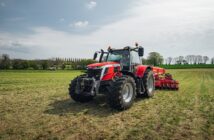Flowering sprays are the last opportunity to prevent light leaf spot infections spreading onto oilseed rape pods, as well as protecting against Sclerotinia. Assess carefully the risk of both diseases during flowering, Bayer advises.
Three-quarters of samples assessed in March as part of Bayer’s SpotCheck initiative were infected with light leaf spot – a slight increase of 3% from February’s results.
Not surprisingly, more light leaf spot was found in samples where no previous fungicide had been applied, says Adam Tidswell, Commercial Technical Manager for Bayer in Yorkshire. In his area, 84% of samples had come back positive for the disease.
“If you haven’t protected against light leaf spot already, it makes it even more important to making sure your flowering spray also has light leaf spot as well as Sclerotiniaactivity.”
Infection of the stem with light leaf spot results in small brownish, purple lesions often with black speckling around the edge,” he says. “As the stems start to extend in spring, the lesions expand. In severe cases the stems split vertically along the lesion and occasionally break – this can allow access to other pathogens such as Botrytis grey mould and Sclerotinia.”
Severe pod infection leads to premature ripening and seed shedding so it’s important to check for infection and apply a fungicide with both light leaf spot and Sclerotinia activity, such as Proline (prothioconazole), before it causes other issues, he advises.
At this point in the year, growers should be careful to monitor the crop’s growth stage, Philip Walker, Arable Plant Pathologist at ADASsays. “One of the things that makes light leaf spot such a challenging disease to control is that it can develop very rapidly. You can go from first signs of infection to 100% disease incidence within a couple of weeks if the epidemic is severe.”
“If the weather is conducive light leaf spot continues to cycle which is why it’s important to protect your leaf layers with a fungicide at the flowering stage, as it is the last opportunity to prevent further movement up the canopy and onto the pods where it can cause the most damage via early senescence and pod shatter.”




